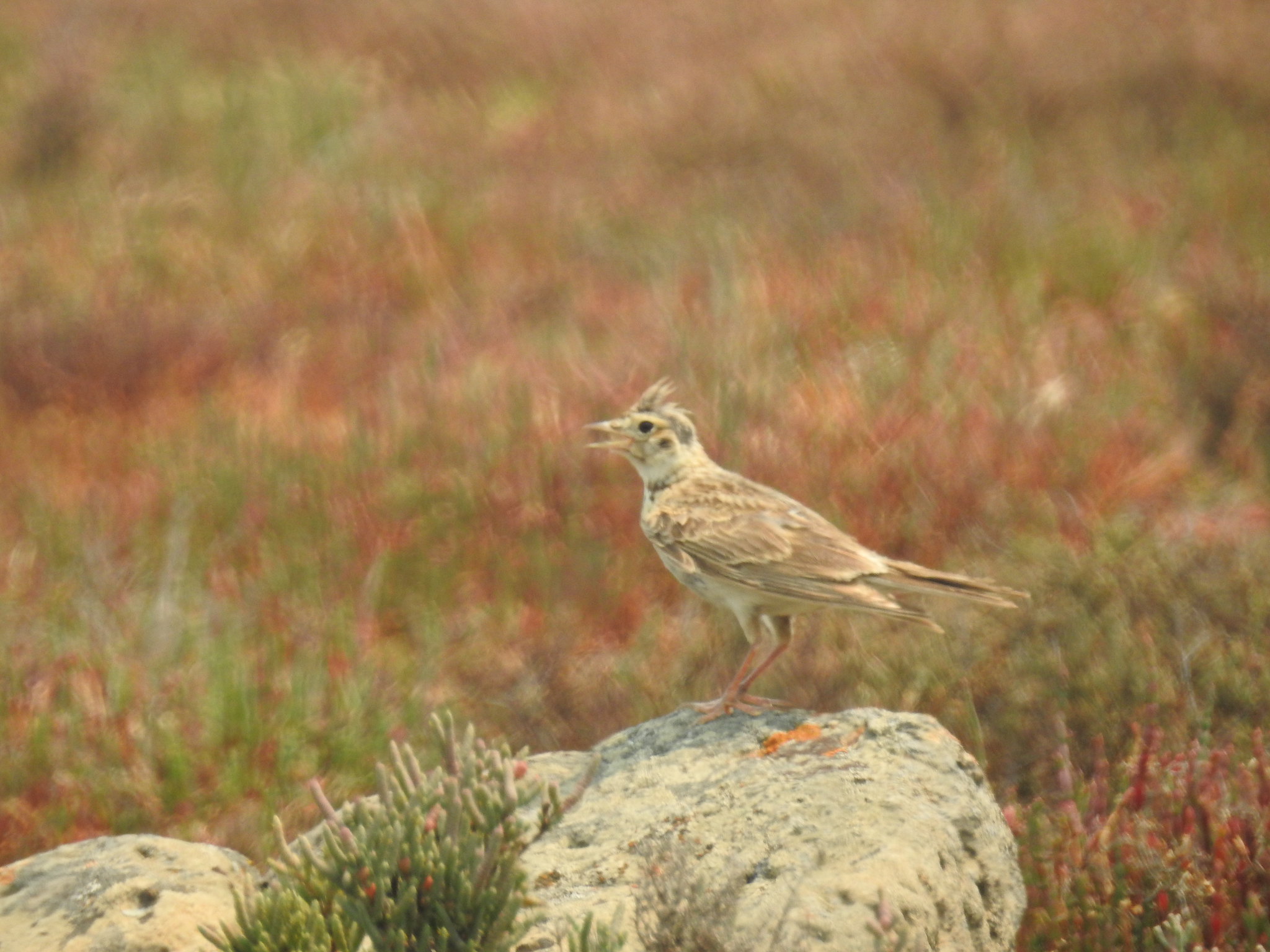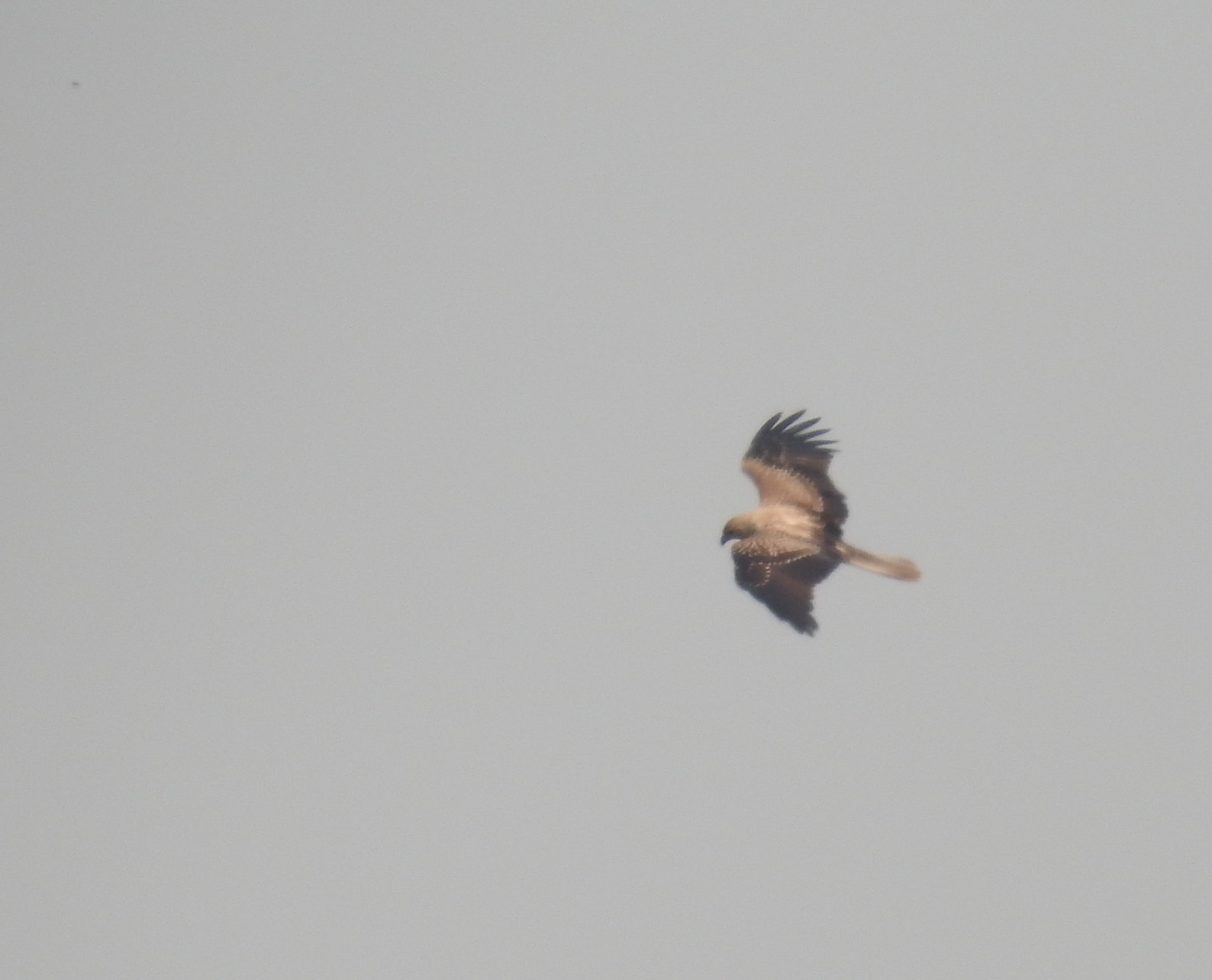I guess my personal aim is 200 species this year and these are from the first two weeks of the year. I've been lucky to have the time to get out a bit.
As usual, be prepared to be underwhelmed by my photographic skills and i'm absolutely open to having id challenged, it's a good learning process and some of the shore birds can be very tricky for me.
I did though, manage to get a true vagrant, yesterday actually, which was very exciting. I'll leave it to last.
1. Brown Quail. Not the best shot but look at that little one! Have ever seen a cuter chick?
 2. Cattle Egret.
2. Cattle Egret.

3. Eurasian Skylark. I always have a bit of trouble with the skylarks and songlarks but the crest was a bit of a giveaway.
 4. Black Kite. Happy with the bif shot, taking a chance on the id here. I'm not great at raptors in flight.
4. Black Kite. Happy with the bif shot, taking a chance on the id here. I'm not great at raptors in flight.
 5. Australasian Pipit.
5. Australasian Pipit.

6. Common Starling
 7. Red-necked Stint
7. Red-necked Stint
 8. Curlew Sandpiper
8. Curlew Sandpiper
 9. Pelican
9. Pelican

10. Australian Fairy Tern

11. Brown Falcon
 12. Red Kneed Dotteral
12. Red Kneed Dotteral



14. Royal Spoonbill. I liked the balancing act.



16. Pied Stilt (white headed stilt). I actually reall liked this photo. Early morning. Everything was very calm.












Now for some local chooks.
17. Chestnut Teal
28. Rufous Fantail. Definite ebc. Even though i saw about five that day i just couldn't get a decent shot. Hopefully the orange in the tail is clear enough.
Sorry, 61. Spiny cheeked honeyeater.
Wow, Pip, a fantastic start and well done to include such a rarity as this vagrant Shelduck. It will be interesting to hear what the final decision is on ID. You have some lovely shots there but I think I like the Yellow-billed Spoonbill is my favourite. Pleased you were able to get out and about as it has been most productive.
Wow what a haul. It looks like those Brolgas are just walking down the street. I do like the Stilt photo. You obviously have more shots as you didn't include the Black Swan or the Common Myna that were photobombing your shots
Thanks Dev, black swan is there at 53. Here's our common Myna and a few other locals from today's walk through horrendous air quality here in Melbourne.
64. Common Myna.
65. Red Wattlebird. A bit of an ebc.
Bah I've got no hope, everyone's simply flying. Lovely photos pip, and I would be happy with most of not all of those. My goal is to get a photo, which can used for ID. Keepem coming, happy to take the wooden spoon (hey but there is a long way to go!) Again too many to have a favourite. Most would be new to me.
Dale Huonville, Tasmania
Pip, what a great start! Werribee is being good to you :-) A good few there that I've never seen, and some good photos too. Love the brolgas, the emu and the yellow-billed spoonbill. I'd also struggle with the greenshank and marsh sandpiper, some shorebirds are really hard - my tactic is to photograph them all and sort them out later with multiple reference books :-)
That Shelduck is intriguing - does look like a SA Shelduck (tadorna cana) but they are basically sedentary, so it would be shocking to find one here - perhaps an escaped bird from a breeder? Looking forward to hearing more as you find out more, what a cool sighting.
For shorebirds, I take plenty of pictures & flight shots or underwing if possible so it can be sorted later if necessary. Also check for presence of hind toe to distinguish between Sanderlings & Red Necked Stint as former lack one. Check out bill length versus head width for Lesser or Greater Sandplovers as well as leg length. Bill length & shape as well as feather pattern important in shorebirds but many other marks for different birds so hope some of these help. e.g. I think Great Knots look dumpy with a small head & wearing little heart-shaped marks... I know silly but it works for me.
That Shelduck is creating much discussion on various sites & they seem to be waiting for the plumage to fill out but it may never be sorted. Keep a watch for it, Pip. Escapee from local area seems to have been ruled out. Always interesting to wonder what journey they have taken & if a storm blew them off course. I really need to visit Werribee this year!
Yes, that duck is mysterious. I listed it as sp. duck on ebird so i'll wait and see what is decided before claiming a sighting of a particular species and of course that would mean i'll have one less on the big year challenge if it's determined to be a strange hybrid domestic.
Thanks for the tips Sue. Ridiculous, but i'm going to try to commit them to memory. I'm increasingly at peace with the shore birds thanks to regular werribee trips. I'm still often lost but as long as you can be certain about a few them when something looks a bit different you at least know what to focus on.
This photo gives you some idea of what confronts novice shore birders at Werribee. Including ducks and terns, there would have to be 20 different species here, i reckon, maybe more. And i'm told numbers have dropped off dramatically from a decade ago!
That is a great illustrative photo, Pip - completely overwhelming to me as a beginner birder! But as you say, you just have to relax into it, start with the few familiar / easy ones, and then work outwards from there and learn a few more. It does actually help having a good few species together, as it shows relative size differences much more graphically than the handbooks do - birds that look exactly the same in photos suddenly look and behave differently relative to others, and you can start to distinguish them. Also, birds that sometimes look odd or different associate with each other - and you realise that they are juveniles or females of the same species, etc.
That photo makes me want to buy a spotting scope... I saw similar scenes at Werribee (not quite as prolific) and the serious birders there had set up camp with spotting scopes and were methodically working through them all and surveying them - I guess that is the next level of skills to aspire to.
Love the phot, Pip as it does demonstrate the difficulty. Identifying shorebirds gets easier as you see more and start to distinguish the sometimes subtle differences but I am no expert.
wow. That is hard. With he shorebird roosts I have experienced, at least the same species tended to hang out together to make it easier. Yours are all over the shop like a dogs breakfast. lol
A small recent collection. Nothing overly special although i don't think i've ever photographed glossy ibis before, so i was happy with that.
70. Pacific Gull
Wow, I see what you mean by smokey Pip. Good on you for getting out there still.Apparently there is a Musk Duck on our local dam which is very rare. You'll hit your century before too long.
Nice going pip, and a good catch on the glossy ibis. Musk ducks are so cool as well - I haven't got a good photo yet, they seem to be pretty shy and shovel off to the far side of any pond I've ever seen them on.
I must've seen 50 Musk ducks down at Werribee this morning. Many with their weird throat lobes in full display. They're strange ducks really. I only found out recently that they can't actually walk.
Love that Glossy Ibis, Pip. Well done capturing some interesting birds and braving the smoke. You are off to great start with a wonderful variety of birds.
Pips not holding back, way to go. Your obviously enjoying the outings, and I reckon you have improved your photography heaps, well done. Hopefully the smoke will clear soon, and life might move back towards normal. Me thinks we might need a mid year visit to the daughter in Melbourne, get to Werribee, then maybe I have half a chance of posting a reasonable tally. Seems there are lots of species in a relatively confined area, which I have never been lucky enough to see.
Dale Huonville, Tasmania